Monday April 29
Hearing attended by Ancestral Indigenous Authorities of the Ixil Region
- First witness: Petrona López de Paz, Estrella Polar.
The witness lived in Estrella Polar on March 23rd of 1982, when soldiers arrived in the community carrying weapons at around 5pm and told them that there was going to be a meeting.
“We arrived in front of the Catholic church, and they separated us, the women in one room, and they locked the men in another room for 5 hours. They even locked the mayor in that room. We were sad, and the women began to cry, and then we heard a grenade from the church, and we wanted to cry even more. ‘Why are they killing my husband when we are just workers’, the women asked. We heard more shots and we said ‘what are we going to do’? We thought we were all going to die when we saw them dragging the bodies out of the church, as if they were dogs, and many people were crying.”
The witness continued her story saying that around 1 pm, the soldiers killed some pigs and cows to eat. “That was when we left. We went to the mountain, while others fled to the jungle. It rained heavily that night and when the sun came up we were soaked. The next day, they went to burn the rest of the houses and shoot our pigs and horses.”
The witness recounted how she hid in the mountains for 9 years, besieged by helicopters and planes that dropped bombs. “Soldiers were always coming and looking for us, so we took watch shifts and would let the others know when the soldiers were coming. We went from one mountain to another. We lived in poverty, we had nothing anymore because they burned it all. We were hungry and thirsty, there was nothing to eat. The only thing there was on this mountain was an herb called San Juan, so that’s what we ate. My husband was able to plant a field of corn, and when it was almost ready to harvest, the soldiers arrived and cut down the corn.” The witness recounted that two of her sons, a 10-year-old and a 6-month old died while they were in the mountains, and that others died from hunger.
“They wanted to wipe us out, wipe everything out. I have no idea what was going on in their heads. They wanted us to starve to death, for all of us to disappear. Now, I can speak, I have my rights, there is peace, and we can come forward without fear. There are many of us, and so we organized. I’ve cried and suffered, and now I am exercising my right to come here and speak, just like the rest of the people who lost family members.”
- Ambrosio Santiago, 81 years old, Xix, Chajul
The second witness is from Xix and is 81 years old. He testified about the events which occurred on February 16, 1982 the day that the soldiers arrived at the village of Xix to burn houses, kill women, children, and elderly people, including his uncle and grandmother.
The witness recounted:
“If I had not left the house, they would have killed me with my wife and children. I left, they burned my house. I was very confused.” The witness said that he went to ask for refuge with one of his brothers in Sumal Chiquito and stayed there for two months until the soldiers arrived in that community with Patrollers (Patrollers for Civil Self-Defense, PACS), so they then fled to another community called Amajchel, where they stayed for six months, until the soldiers arrived there as well, so finally they fled to the mountains:
“We had to stay hidden. If we did not, they would have killed us like animals. That’s what we were to them. With my wife, my children, and my wife’s mother, we fled to the mountains. My mother-in-law died there, and we had to bury her in the mountains. We had nothing to drink, nothing to eat. The soldiers wanted us to starve to death.”
The witness continued recounting the siege inflicted by the soldiers:
“The helicopter would show up to drop mortars, bombs, sometimes three times a day. They killed many people who were hiding, but didn’t get others. That’s what we lived through. It is no joke, it’s not made up. We saw it with our own eyes. What they did was a great disaster. So that’s why I’m here, testifying because this is where justice is done. They killed children. What was their crime? We have lived through this, so I’ve come here to say what I have seen. I come to speak the truth.
“When we heard that they were no longer killing people, we returned. The soldiers made us go out on patrols, they gave us a gun and we had to follow orders. If you didn’t listen, they beat you. They had a military base and we had to bring them firewood every 15 days. That’s what they did to us. It was horrible, but they don’t admit it.”
“I was suffering, hungry, thirsty, barefoot. It’s very sad what happened. We ask for justice to be done. Think about the people who died alongside their children who we cannot see anymore.”
- Expert testimony, Archaeologist Alvaro González
Archaeologist Alvaro Gonzales wrote his expert report for the Guatemalan Forensic Anthropology Foundation (FAFG).
The report is about the exhumation performed on August 21, 2006 in the municipality of Chajul. The exhumation had the goal of recovering remains in a secret mass-grave as well as any sign of the moment or way in which the human remains were placed there. The expert stressed the importance of doing the work side by side with the family members who showed him the area to explore. Before beginning, a ceremony was done with praying, flowers, and incense, “which is very important for the family members as a show of respect.”
The expert testified that they found a hill where the grave was. Clothes were found, a wooden casket, as well as an incomplete skeleton of a child between approximately three and six years old.
- Juana Aguilar Gomez, 61 years old, village of Jauventau, San Juan Cotzal, Chajul.
On January 23, 1982, about 50 soldiers arrived in Jauventau at about 7:00 a.m. and surrounded her house, where she lived with his husband, mother-in-law, sister-in-law, and one year old son.
“The soldiers arrived and burned my house, grabbed my husband and I never saw him again. They accused my husband of having weapons. They put a gun to my head and tried to burn me, they held me when they burned my house, I struggled, they took my husband away with his hands tied behind his back. When I could, I slowly went into the treeline, that’s how I managed to survive.”
Her husband is still missing. The witness said that during their refuge in the mountains, army helicopters passed by and dropped bombs on them. She finished answering the questions of the complaint in the following way:
“I came to tell what happened to me, I ask that the law be applied to the person who did this. I suffered, I became a widow, they burned my corn harvest, my clothes, my house, my animals, they left me nothing, what I want is that justice be done.”
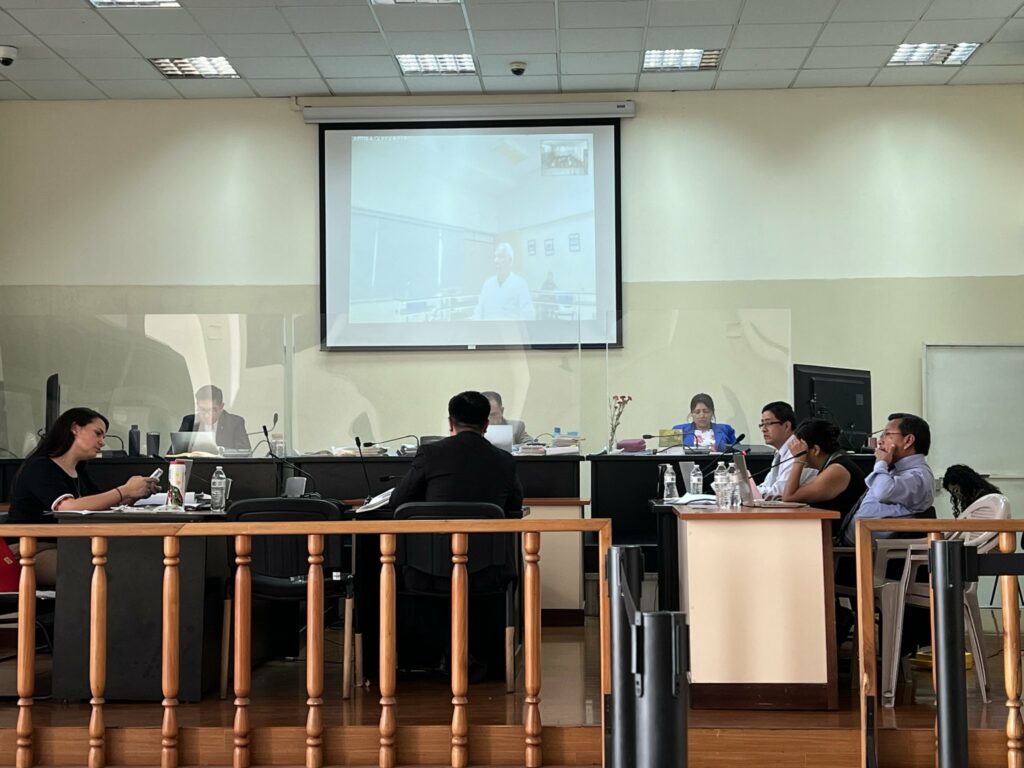
Photo by NISGUA Internacionalistas. Guatemala City. May 2024.
Tuesday, April 30, 2024
- Félix Gallego Brito, 72 years old, originally of Xachmoxan, Chajul
On October 25, the witness lived in Chel village. Around 8:00 a.m. about 25 soldiers dressed as Kaibiles arrived and committed a massacre in the community, killing approximately 124 people with machetes, including women, children and the elderly. On the day of the massacre, the soldiers also burned the houses and crops and took the animals to the army detachment at La Perla plantation, approximately two hours from the community.
A week before the massacre, the army entered the community and took away their father, who was a community healer and had previously held office.
The witness relates that on the day of the massacre, the soldiers threw both bodies and living people into a nearby river from a bridge. They had to pull bodies out of the river to bury the people in a hole. The witness lost three of his brothers that day. He then took refuge in the mountains with his partner and children.
“We came here, because we lost everything we had, we were left with nothing at that time and we have struggled, and we lost family members at that time, and I am here again with that hope, that the government will help us, because we lost everything and it is impacting us a lot, we want the government to take that into account.”
- Pedro López Brito, 69 years old, originally of the Palop village, Nebaj
In February 1982, in the village of Palop, the army arrived and entered his sister’s house. Many people from the community, including him and his family, fled. When he was able to return the next day, he saw that in the courtyard they had tortured his sister, who still had a noose around her neck, and his two-year-old niece’s throat was slit. That day, the soldiers burned three houses. “There were still some houses and we held a wake for one night. We buried them in the community cemetery. We were burying my sister, when the army came down again and killed 5 people.”
After this massacre, the people fled to the mountains, he at the time had a 45-day-old son: “We want justice for everything that happened to us, the scar is not erased.”
- Francisco Cabá, from Ilom, Quiché
On January 15, 1982, he was at home. At about 10 o’clock at night the soldiers arrived and grabbed 15 people. At about 2 o’clock in the morning, they took them to the La Perla plantation: “they wanted to finish us all off with the argument that we were guerrillas”. Of this group of people who were taken by the army, they only managed to locate the skeletal remains of 6 people, which were found in a cave.
On February 18 the witness had gone out to the field to work, but the soldiers entered Ilom again, they were carrying Galil weapons (of Israeli manufacture) together with workers from the La Perla plantation with M1 rifles. They locked up 18 to 20 children, men, women and elderly people in their own houses and set them on fire.
On March 23, 1982, a battalion of soldiers and people from La Perla arrived, whom the boss of the plantation had forced to join the soldiers. That day, a soldier came to her house and told her in Spanish to get all the people who lived in the house out and to go to the plaza because there was going to be a class.
“The whole community came down, because we didn’t have commitments to the soldiers or the guerrillas. They told us ‘today you are going to be given bread and coffee,’ I guess bread was the bullet. They took all the men – including children – to the Catholic church. I was carrying one of my sons in my arms, he survived too. But the soldiers started taking people out two by two, telling them to walk in a certain direction and shooting them. If they didn’t die, they finished them off. Domingo Sanchez was the last one to die that day. Thank God I didn’t die that day.”
Between one and two o’clock in the afternoon, the soldiers told the women to go get tortillas, beans and coffee for the soldiers, and they ate the people’s pigs and chickens. After the massacre, the lieutenant present told them that they had to dig a hole to bury the people, he even told them how deep the hole had to be “‘so that those guerrillas don’t come out’ they said, but how could they come out if they were already dead. These people have already been exhumed, now they are in the cemetery.”
“The soldiers told us to leave, to go the coast or to Chajul, but there was no longer a bridge to cross, they told us ‘if you don’t leave immediately, we are going to set fire to your asses’, that is, they were going to burn us.” The witness relates that more than half of the people survived and were displaced:
“We went to Santa Delfina plantation and worked there for a year without receiving any pay. There 150 children died from the cold, hunger, and fear, including one of my daughters named Engracia, who died when she was 20 days old.
“I say it because I saw it with my own eyes, it is a sin to lie and I do not make up anything of what happened. I saw it with my own eyes. More than anything else, I ask for justice, I don’t want money, because all the governments that have taken office have been corrupt. What I know is that Lucas García was the president when Ilom was burned, because I saw it on the news. The burning of our crops, our houses, our animals, continues to affect us a lot. We have not received compensation for everything that happened to us, what I come here to tell is what I really saw”.

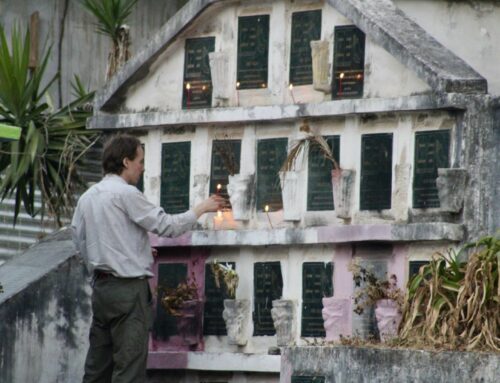
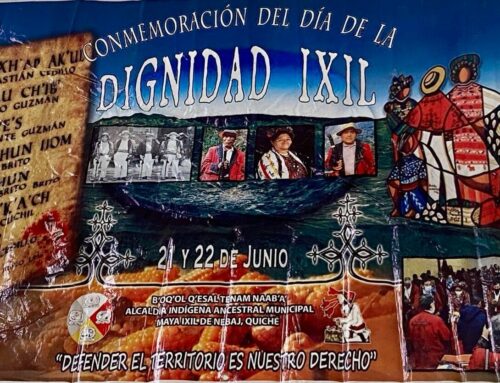
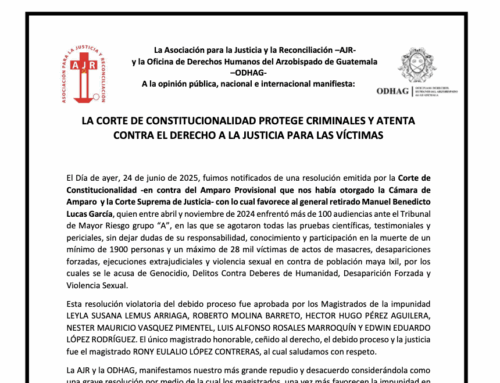
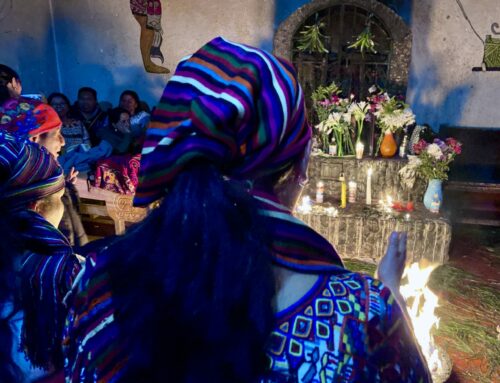
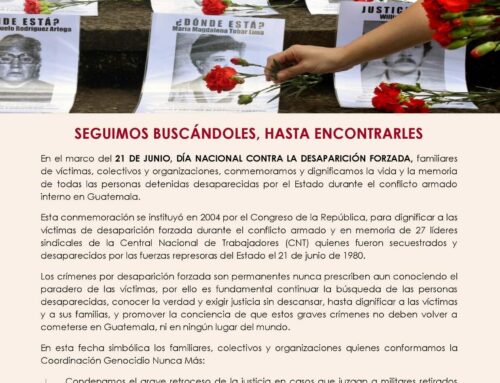
Leave A Comment